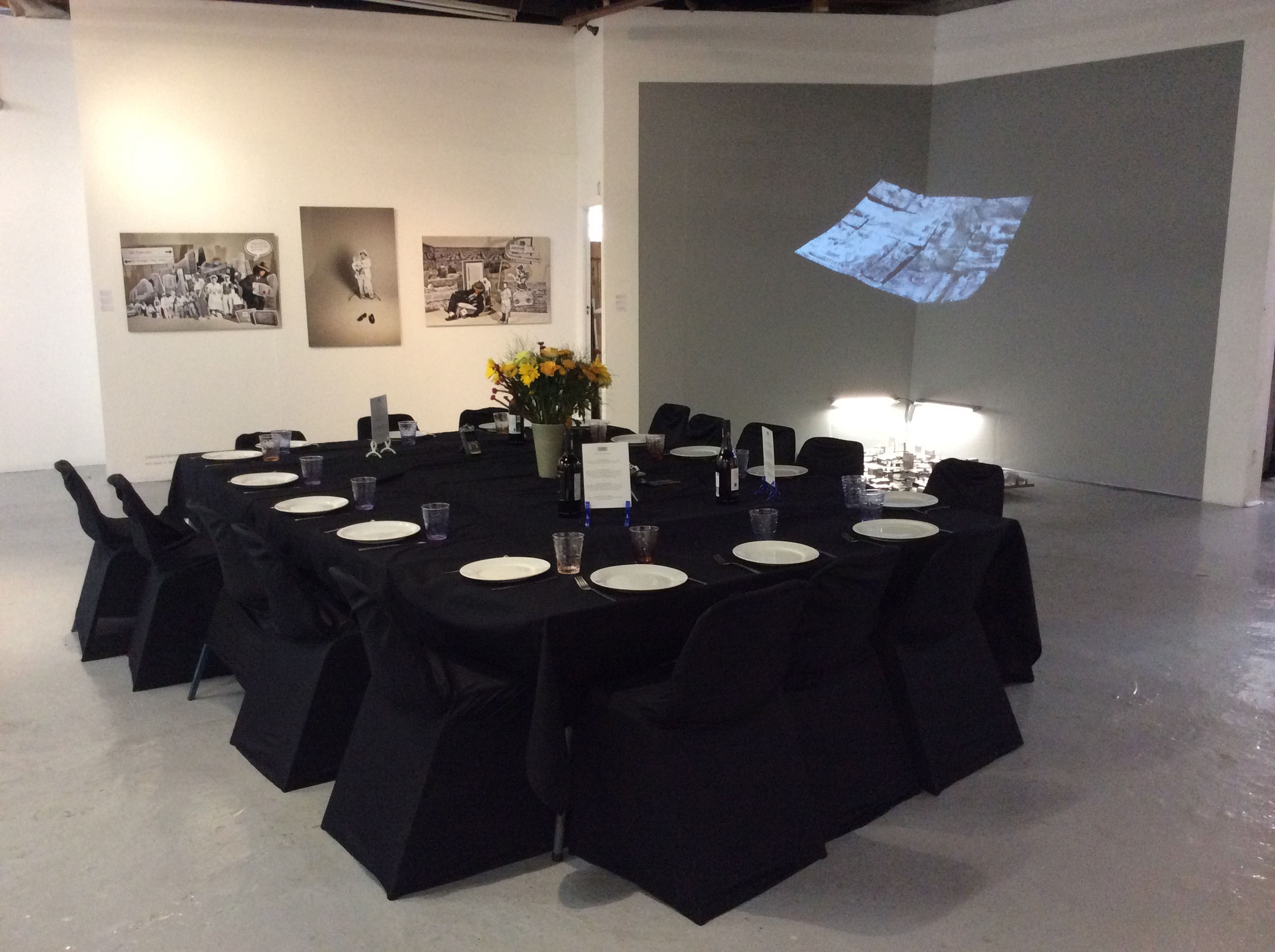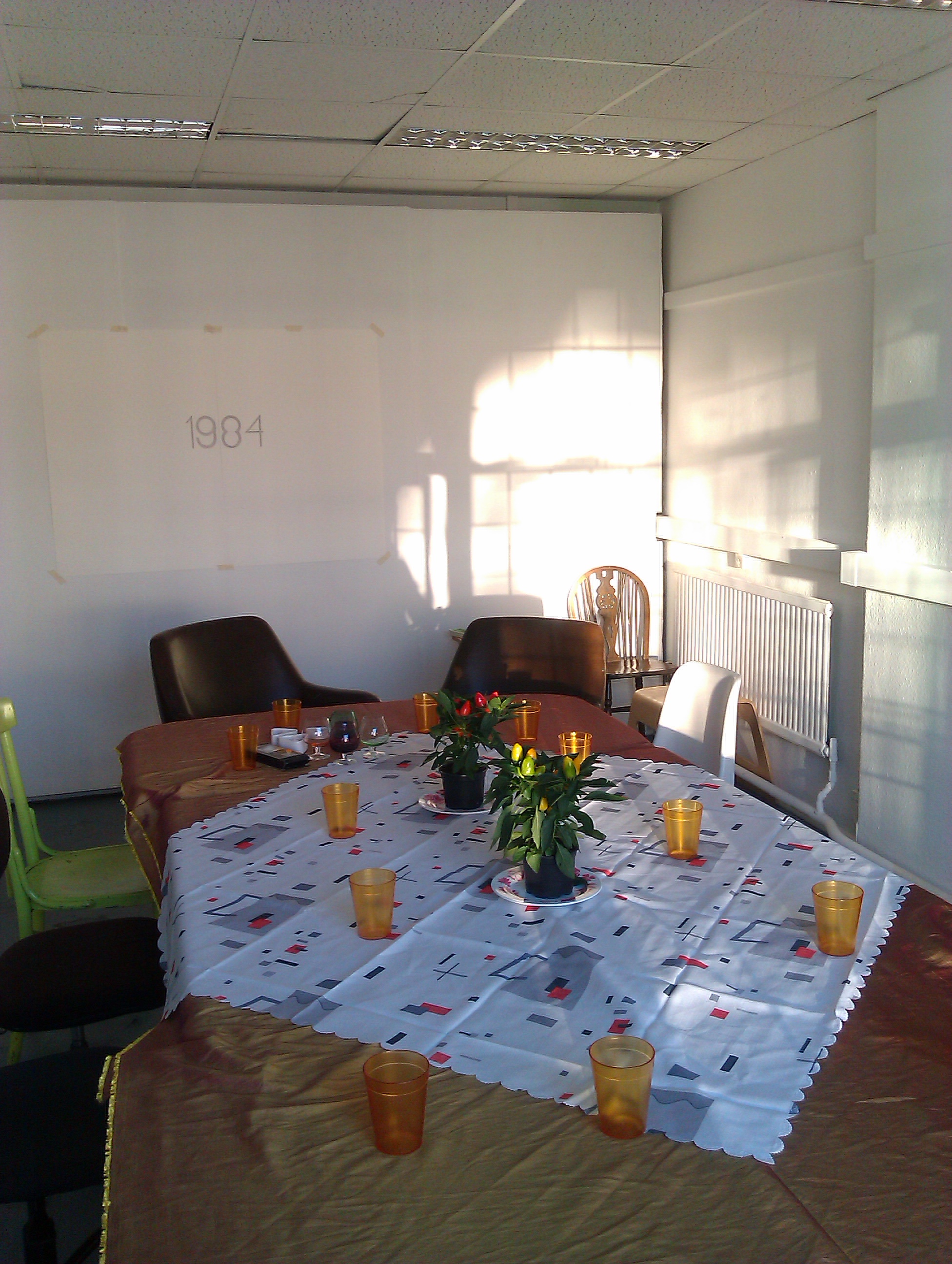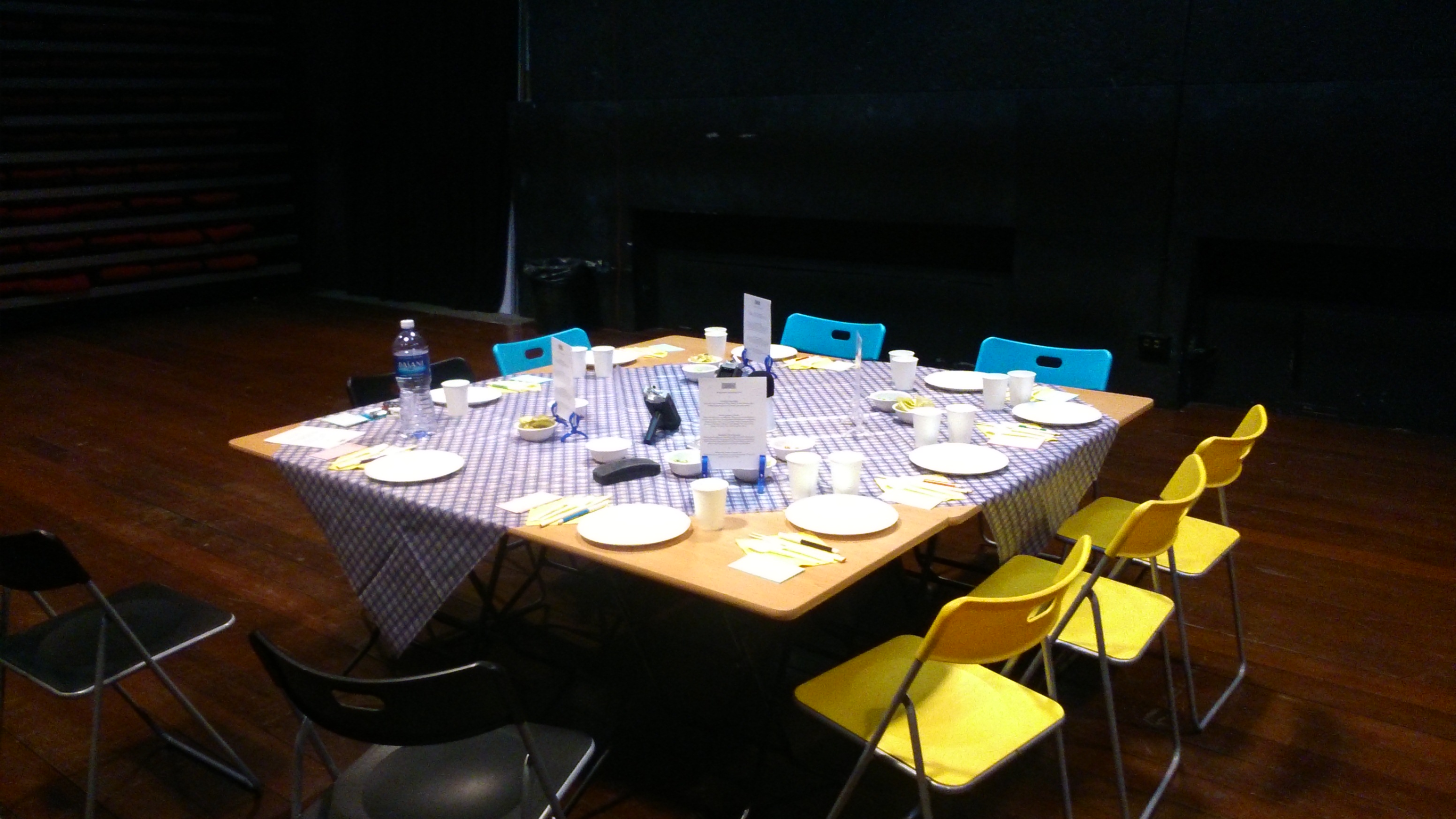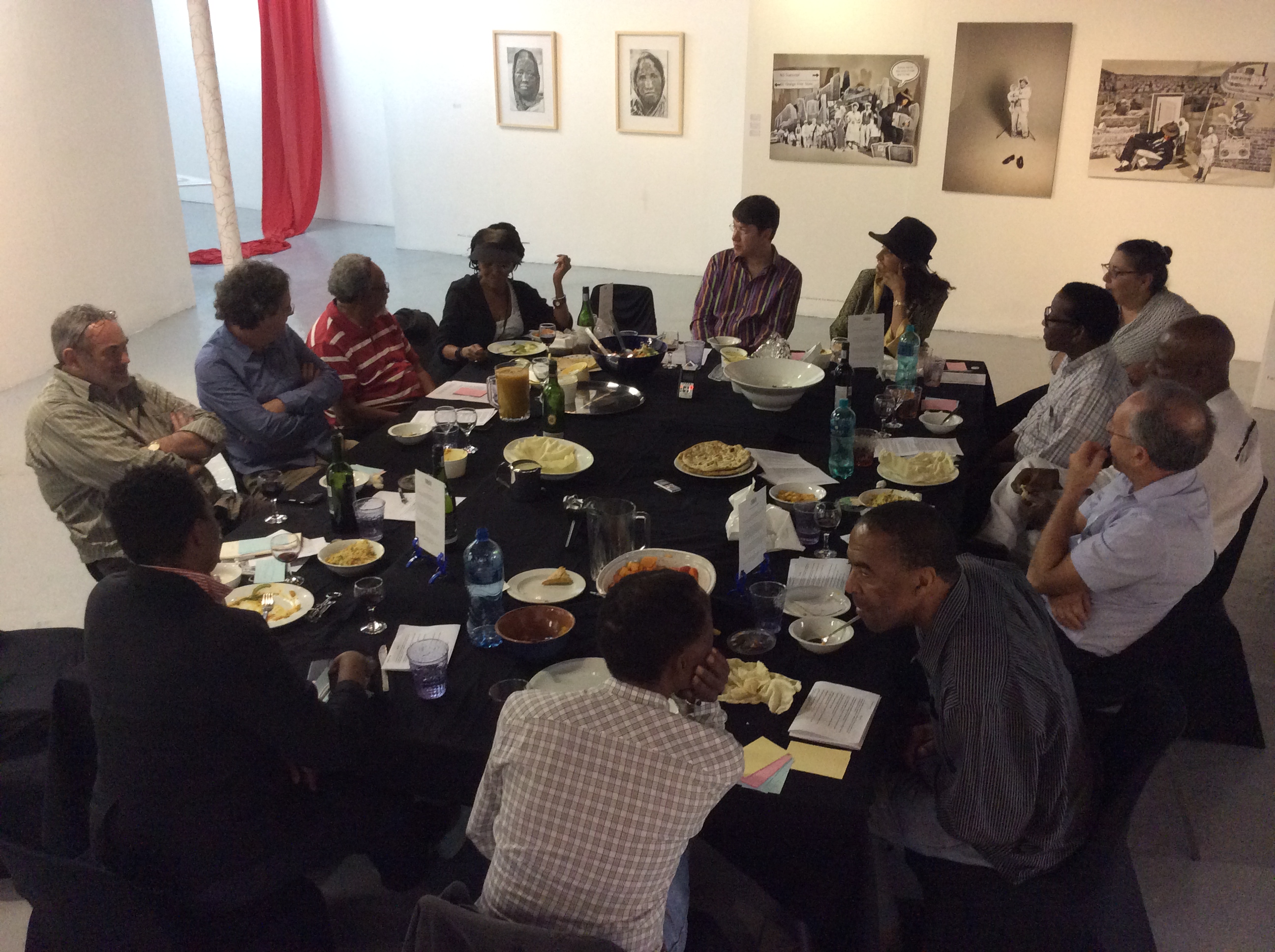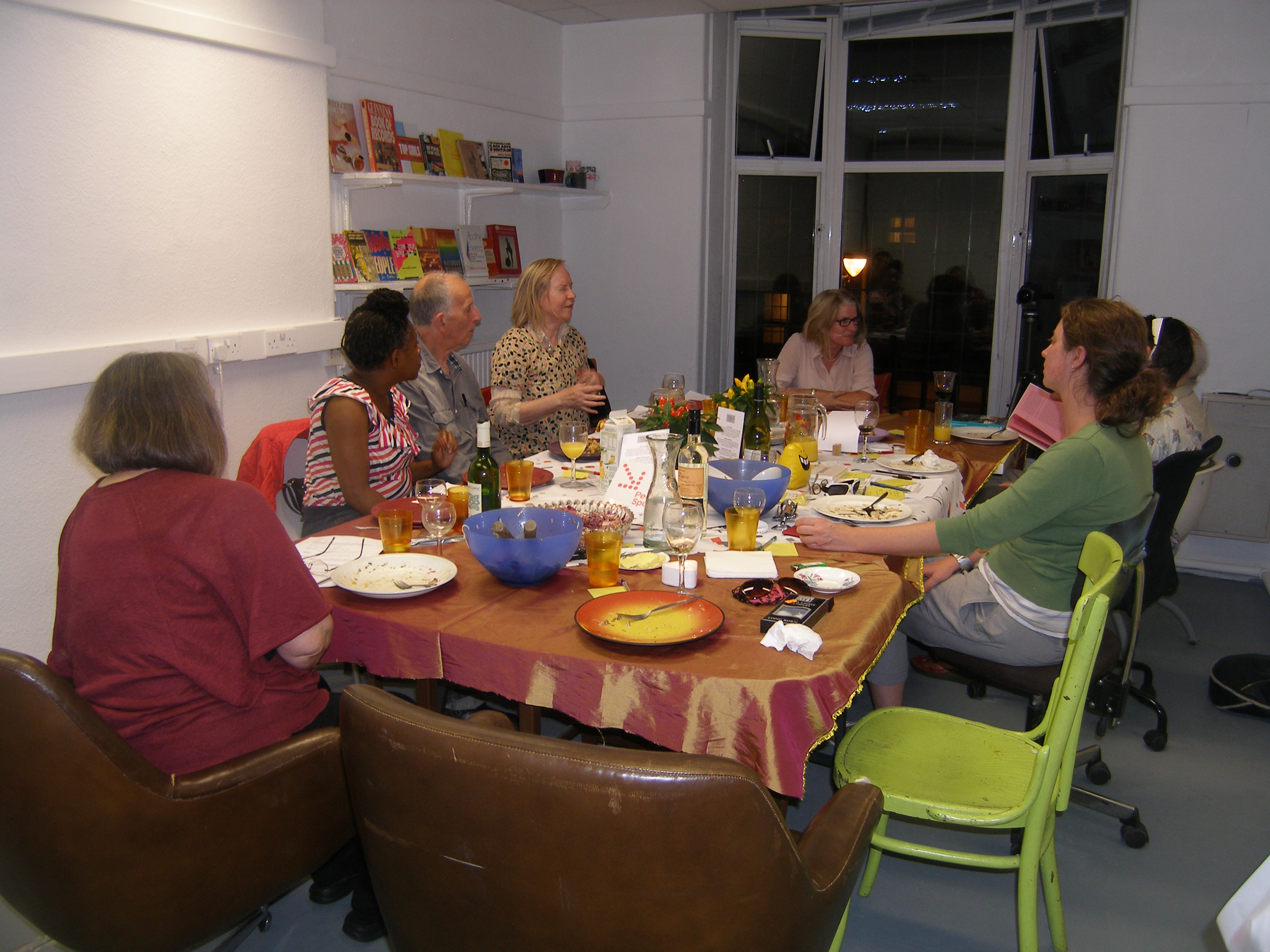Methodology
Background:
1984dinners.net stems from the archival research I was doing during my PhD about the Greater London Council from 1981-86 and the relationship between the left-wing metropolitan council and their support of activist, feminist, anti-racist, overtly political art groups and actions at the time. This was happening at the time of, and in direct opposition to the then Thatcher government. Through a brief exercise in time travel I wanted to explore the tactics and practices of artists/activists working in the margins of institutionalised culture during the Torie government of the 1980s, and consider what we can learn from these approaches in a different era of Conservative-Liberal Democrat politics, 30 years on. On 29 September 2011, I hosted the first 1984 dinner with six invited guests in my studio building on Deptford High Street, London to discuss art and politics in the year 1984. My guests were Loraine Leeson, Sonia Boyce, Stephen Lobb, Flick Allen, Leila Galloway, Shirley Cameron and Roland Miller, all artists actively working in the UK now and in 1984. I then went on to arrange 1984 dinners in Singapore, Australia and South Africa during my sabbatical in Spring 2014. The resulting audio extracts housed on this website cover different topics prompted by a menu of questions I prepared for the guests and which were used to frame the discussions. These included questions about the frictions and conflicts that existed at the time among artists, the institutional support structures and funding they tapped into, how they made a living and what they think of the context now in relation to 1984. Unsurprisingly the conversations took different turns and moved beyond my menu of suggested topics. I am interested in how this audio archive might trigger discussion and further responses about the political and economic context of art and activist practices in the mid 1980s in relation to past, current and future theories and practices or art and politics. As I was seven years old in 1984, I am interested in how I can translate and re-interpret events I didn’t experience first hand.
My starting point for this investigation into histories of art and politics is that memories are fluid, subjective accounts that can vary over time. At the invitation to reminisce, our present selves enter the process of interpreting actions and experiences we had in the past. Inevitably, with all the subsequent experiences we’ve had, we are going to influence interpretations of our past selves. These contradictions in memory are played out around the dinner table as the guests actively construct versions of their past selves in that moment. Through this project, I am interested in exploring the site-specificity of memory; transnational and fictitious aspect of memory and inconvenient, conflictual memories. How might memories be co-constructed? How do oral memories relate to the materiality of the archive?
This is a project about trying to understand and document nuanced experiences of art and politics in 1984, but it is also about experimenting in methods of finding out, remembering collectively and exploring issues of translation and reiteration. Key to this process is a question about how territories of memories and narrative fictions of recent histories are created and re-interpreted across generations and geographies. These exercises in oral history are never neutral but imbued with the performance of recollecting that goes on around the table. The dinner itself becomes a stage for the creation of multiple versions of 1984 from different perspectives, depending on what and how the guests choose to recall.
My role in this process has been to invite a select number of guests, facilitate the conversations using a menu of questions as a prompt and witness the discussions unfold. The editing of the conversations into themed audio tracks involves a process of listening and re-arranging to create edited versions of the narratives that emerged from the dinners. There are layers of interpretation and editing through out. I am inviting people to cast their minds back; they select some things and leave others behind. I capture the things they say to each other and edit their words – I listen, listen again, split, drag, delete, rename, save. The process of editing, paraphrasing and reinterpreting of events continues. Flick Allen mentioned during the first dinner how this exercise acted as ‘reiterative inspiration’ in terms of reflecting where we are now in relation to our previous histories. I am interested in the fallibility of fieldwork and the connections between research methods (the practice) and the content of the research. I want to explore ways of entering the material and history in a way that does not ignore the complexity of experiences, agendas and ideologies of a time and place, but to navigate my own journey through these different territories of memory.
The dinners draw on multiple, complex pasts that co-exist, producing and capturing partial histories in the process. The experiences of the guests might overlap or never touch. These dinners in different pockets of the globe, for example, reveal commonalities between aspects of ideology and political consensus of the period, but also that the specific political and social geographies in which people were working, struggling and engaging with were site-specific and not directly relevant or connected to broader global concerns. The resulting audio archival snapshots of life in 1984 in different contexts across the globe, allow for a deeper look at particular struggles, methods of working and survival, support structures and contentions in London, Singapore, Australia and South Africa.
As a way of researching an area of recent history that is relatively undocumented, I wanted to use the method of choosing one year to focus my research. I am fascinated with the idea that you can take a slice in time and capture what was happening in very different places to different people at that time. I wanted to find a way of connecting up voices and experiences to see if narratives could be constructed around this slice in time. I had in my mind, the 1991 Jim Jarmusch film ‘Night on Earth’ which tells the story of five taxi drivers in five different cities on one night. Jean-Michel Rabaté also employs the framework of using one year to examine a history of literature in his book ‘1913: The Cradle of Modernism’ (published in 2007) in which he brings together significant cultural events and works of literature to understand this period of early modernism.
My choice of the year 1984 stems from my research into the period of the GLC in London (1981-86) and wanting to select a year within that bracket to explore further. Significant to my particular research, 1984 also saw the publication of the English translation of Michel de Certeau’s ‘The Practice of Everyday Life’ (originally published in French 1980) by Steven Rendall and Owen Kelly’s ‘Community Art and the State: Storming the Citadels’ published by Comedia. While these are two very different publications, they have been important reference points for me during my research into the histories and theories of socially engaged art.
The spectre of George Orwell’s ‘1984’ (published in 1949) is hovering in the background. It acts as a backdrop but is not centre stage. 1984dinners.net is not a project about whether or not people thought they were living in Airstrip One, although relationships between politics, the state and collective and individual identity and self-expression were explored from different angles around the tables. Crucially, this focused look at what was happening in 1984 also requires us to asks ourselves where we are heading
The method of the dinner format allows the guests at the table to shape the conversation, with the menu of questions acting as a framework of topics to address. Narratives of 1984 are formed from the memories and viewpoints present. Each recall and reflection triggered further reminiscences and ruminations. The type of ‘data’ that emerges from the dinners I suggest is different to the kind of information I might have garnered from interviews with people individually. I would have been unable to offer any first hand experiences and the interviewees would have been conversing with themselves, with me as eager listener. Rather, the generative effect of the dinner conversation prompted a richer flow of reference points and experiences.
The tables and chairs are arranged before hand, in a square. Guests are invited to sit where they want. I intervene with questions and prompts if need be, bringing things back to the topics on the menu of questions. There is an element of theatricality to the dinner as a performative space. It is formal, with seating arranged so that guests are facing each other, and potentially intimidating with inherent, unspoken rules about table manners that may or may not be shared. There is also a suggestion of informality and conviviality in eating and drinking together suggesting an encounter which is less formal than an interview or meeting.
The artist Lois Weaver developed the idea of The Long Table as a method of encouraging public informal conversations about serious topics. With the Long Table format the conversation at the table is being watched by an audience, any of whom can take a seat at the table. With the 1984 dinners, the guests are invited and there is no immediate audience. The invite-only aspect of the dinner acknowledges the inevitable imperfection of the reminiscence process, allowing the guests up to three hours to exchange memories and reflect on recent histories. The resulting audio recording is a snapshot of 1984 created by those people around the table who have agreed to attend. Another group would have a different set of stories to tell (interlinking perhaps, but also distinct). One dinner could spawn many more.

